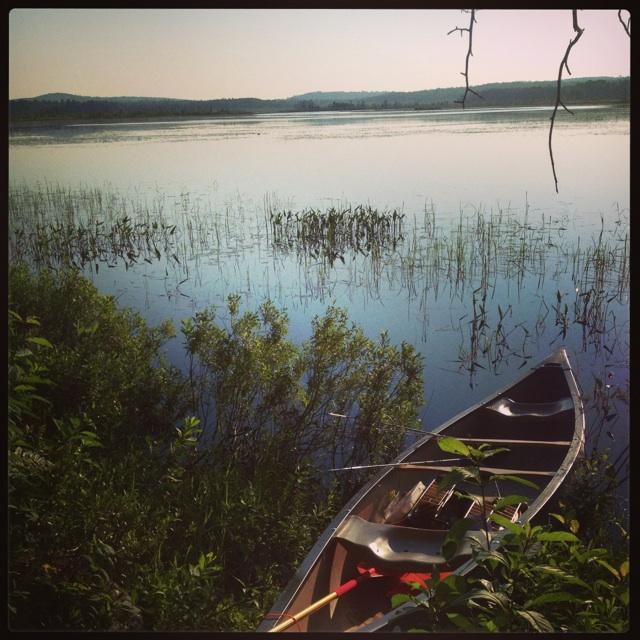
I have been having a busy summer and have not been blogging much thanks to my computer dying, but I have lots to write about. I have been doing some bass fishing in shallow, deep cover water with Colleen. Before our last trip in June, she spontaneously said "Let's camp out in the bog!" (yup, she is a keeper!). We threw the camping stuff in the SUV, loaded the canoe, and went. This was not bushcraft/survival camping; this was comfort camping to ease her into sleeping outdoors. We pitched a tent and on the island and had a nice little campsite which was almost invisible. It was HOT (in the 90's) and humid so staying warm at night was not an issue... staying cool was. It was very buggy, being a bog and all, but Colleen used Off with DEET with no complaints.
The fishing there is awesome! I caught a bass and Colleen caught the biggest bass I have ever seen. I am 19 inches from elbow to finger tip. The bass was huge. The bass were territorial and were guarding their spawning beds. She caught her bass before sundown on the first night. The next day I think we each caught a smaller bass 12 inches or so.

 The camping was good and we learned a few things. Like Colleen does not like sleeping on the ground we need a mattress, and Colleen needs her body pillow where ever she goes. Also 90 degrees and high humidity do not make an environment suitable for cuddling. Also, I need to lose more weight because after an hour sitting in a backless canoe chair, I am in a lot of pain.
The camping was good and we learned a few things. Like Colleen does not like sleeping on the ground we need a mattress, and Colleen needs her body pillow where ever she goes. Also 90 degrees and high humidity do not make an environment suitable for cuddling. Also, I need to lose more weight because after an hour sitting in a backless canoe chair, I am in a lot of pain.  The morning was brutally hot and by 7:00 am when I made my coffee on the Crusader Stove I almost didn't want it. We were ready for home by 9:00am and packed it in. It was an awesome little adventure.
The morning was brutally hot and by 7:00 am when I made my coffee on the Crusader Stove I almost didn't want it. We were ready for home by 9:00am and packed it in. It was an awesome little adventure. 












































